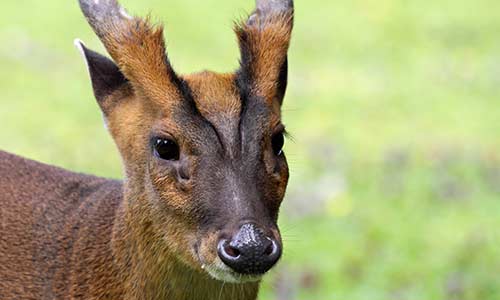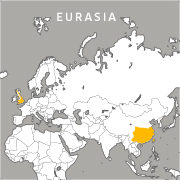Reeves's Muntjac
Munticus reevesi
!Animal Alert
Our muntjac is temporarily behind the scenes while his habitat is being transformed with a second, enriching space filled with natural features and lush vegetation. Stay tuned for updates!
You Can Find This Animal in the Children's Zoo
I hear a deer!
Muntjacs are sometimes called barking deer because of the distinctive sound of their call.
Committed to Conservation
Zoo New England takes part in the Reeves’s muntjac Species Survival Plan. This program brings zoos together to share research and expertise, create care guidelines, and help ensure the health of populations and the survival of this endangered species.




